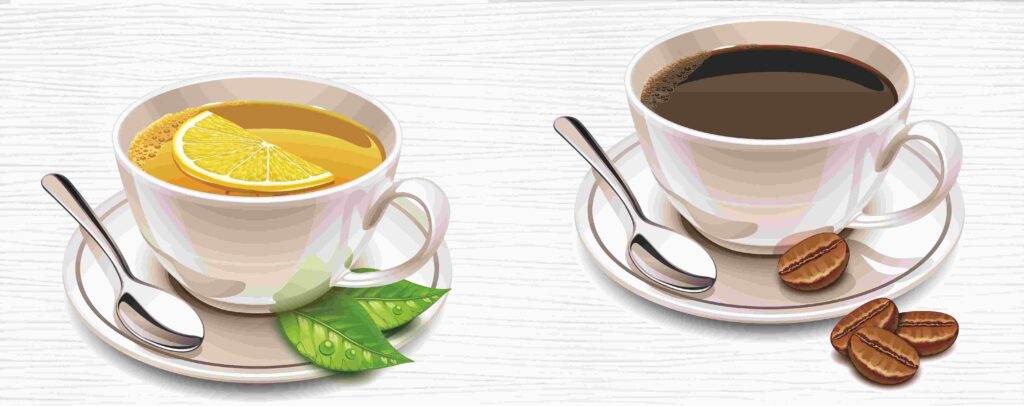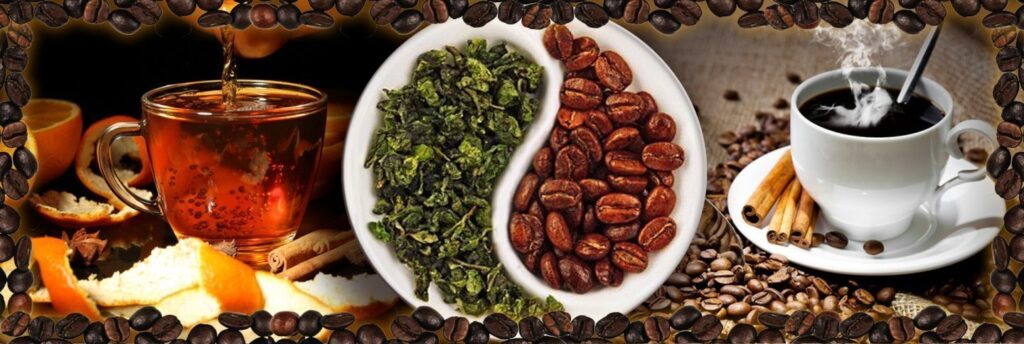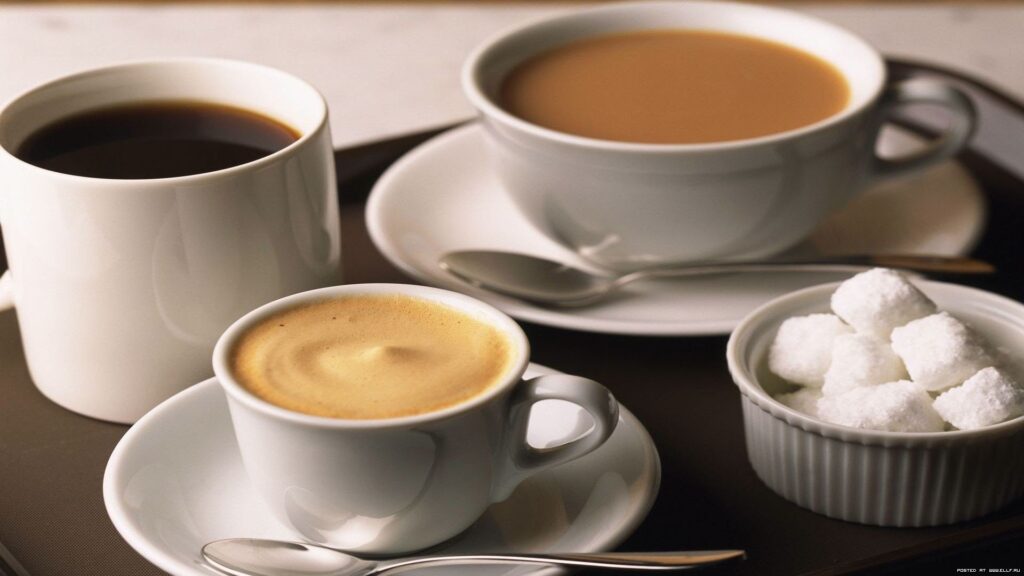The future in Ukraine belongs to spirituality: not in the worn-out sense of bondage, but in the sense of a conscious attitude to what we eat, drink, do, as we say. Tea in the form in which it is now is more suitable for such a context. Of course, when a barista quickly squeezes out an espresso for you on a typewriter, then the issue of energy and rapprochement falls out a bit. Coffee in the current format is a transitional moment from a gloomy consciousness flooded with vodka, fat and other things to a more pure, meditative mindset.
But it is not true to say that coffee is the bridge to tea. Coffee is in a different vein, it doesn’t have to be drunk as most people think: it’s almost a smoking thing, only it’s not lit, it’s heated. There is a very simple rationale. Coffee is the most complex product on earth in terms of the number of flavoring components, there are more than 1500 of them. Most of these components are volatiles, that is, soluble. The fact is that the extractivity of coffee is not more than 30%, and the main range is 20–22%, that is, 80% of these components disappear without a trace during brewing. At the same time, far from the substances that we would like to dissolve are dissolved. If we try to inhale the aroma of unbrewed coffee, then the coefficient will be much higher.
I imagine the future of coffee establishments as follows: first, the grain for you will be lightly roasted in a frying pan, you will breathe it. Then they can grind it, you will again listen to the aroma in order to disconnect from speed, from delirium, from senseless running after carrots, from desperate attempts to grab something new and grandiose. This will be replaced by such quiet establishments.
It seems to me that meaningfulness, awareness underlies any productive activity, but it is not always inherent in a wide range of consumers. But if a certain community gathers, which treats the product with conscious interest, then, as a rule, it will be a great success. And I am very pleased to see what is happening in your professional environment, how such a productive community is being formed around coffee. I admit that we in the tea community have not yet been able to create this. However, we are striving for this, and I hope that this can happen soon.
Both tea and coffee are meeting drinks, but they are tuned differently. They accompany a meeting with each other, and with a variety of cultural phenomena, with social realities, a business meeting, even a meeting with oneself to some extent. However, the market is not built on this, because it is very difficult to sell the opportunity to meet. The market for hot drinks is still based on the fact that they are warming and invigorating. For the sake of cheerfulness and thermal comfort, people drink both tea and coffee.
However, it is worth paying attention to the differences in the effects of the two drinks. The difference is that tea has at least two main active ingredients. In addition to caffeine, this is a fairly rare amino acid, L-theanine, which is present almost exclusively in tea. She is responsible just for the effect of relaxation and appeasement, which we know from well-brewed tea. That is, coffee works as an anti-brake, and tea as an anti-brake plus anti-stress.
Historically, tea remains the main hot drink in Ukraine, deeply rooted in the culture. In search of cheerfulness, a person chooses between coffee and tea. In search of relaxation and stress relief – between alcohol and tea, only in rare cases will coffee be the answer to this request. If you need a state of calm, concentrated performance, there is almost no alternative to tea. As you can see, tea is applicable to satisfy any of these three listed needs. Therefore, there are no grounds for a cardinal reversal of the Ukrainian market of hot drinks, in which coffee will push tea into the background.

How many tons of tea and coffee are drunk in Ukraine?
Over the past seven years, we have significantly moved the slider from instant to insoluble coffee (ground or in beans). In 2017, for the first time fifty-fifty, the consumption of instant and insoluble coffee in Ukraine was equal. And this is primarily home consumption.
Instant coffee in a cafe, of course, no one pours. So, at home in recent years, people have significantly switched to the consumption of grain or ground coffee. Both options require more cooking time. In terms of money, they cost about the same, if we do not take trendy hipster stories.
At the same time, I think about tea that, for all its spiritual component, it makes you look a little less at the technical, organoleptic pattern, that is, at the taste profile, at the fact that coffee is a very large part of the coffee ritual. We all know the four standard flavors and the fifth, umami. But the fact is that coffee products also differ to a greater extent in aromas.
Therefore, if you, for example, chew parsley and cilantro with a well-squeezed nose, then you will not distinguish them by taste. They differ in flavor.
And all these stories in instant coffee are very, very few. But the trend is going on because we are gradually getting used to something better. It is very difficult to pull us back further. The same goes with household consumption. In terms of volume, the tea and coffee markets are the same – approximately 160,000 tons of finished products each.
But this parity in tons is very interesting. This is a new phenomenon, and it was it that became the basis for today’s discussion and for such a statement of the question: “Tea or coffee? Which drink is the future? We are talking about the volumes of imports of dry coffee and dry tea into the country that equaled for the first time in 2017 — 160,000 tons of both were imported. I am sure that in Ukraine there are consistently more consumers who prefer tea. Tea remains the main hot drink in our country and will retain this position. I’ll try to justify.
Let’s look at the dynamics of the tea and coffee markets over the past thirty years. At the very end of the Soviet period, within our country, tea consumption was at the level of 230 thousand tons, and coffee was only 20-30 thousand tons. Now it’s 160 to 160. It turns out that tea has dipped, and coffee is taking over the lead? Let’s make sure it’s not. Ilya, tell me, how many grams of grain goes to one liter of finished coffee?
Take as an average figure the preparation of filter coffee with a consumption of 55 grams of grain per liter. And to make tea, you will need 8-10 grams of high-quality dry tea leaves or up to 20 grams of low-grade ones. Thus, out of 160,000 tons of tea consumed in Ukraine in 2017, about 12–15 million tons of a finished drink called “tea” is obtained. And from the parity amount of imported coffee – about 3 million tons of the drink. It turns out that Russian consumers drink 12-15 million tons of tea and 3 million tons of coffee a year.
So it will be possible to talk about real consumer parity and the fact that tea has lost its leading position in the year in which 500,000 tons of coffee and 100,000 tons of tea will be brought to Ukraine. As for the reduced figure of tea imports in comparison with the late Soviet period, I suppose this is partly due to the increase in the average level of quality of tea consumed in our country: I am sure that from the current 160 thousand Chinese, Ceylon, Japanese and Indian tea raw materials, more drink is obtained than from 230 thousand of that time – Turkish, Georgian, Mongolian and heavily liberated Indian.






